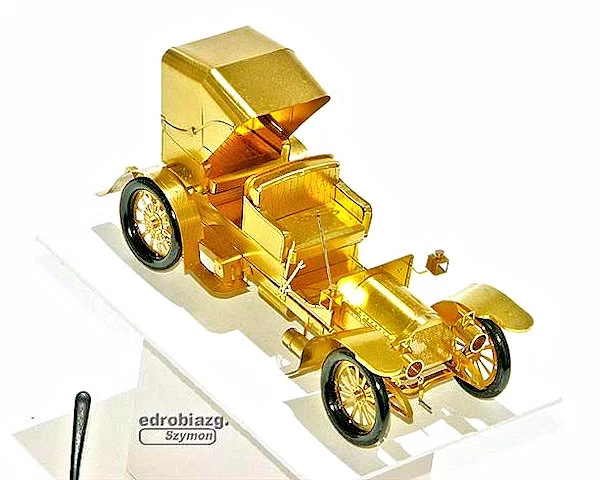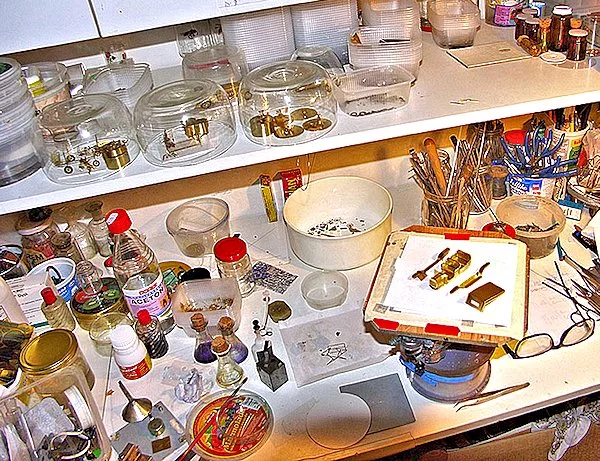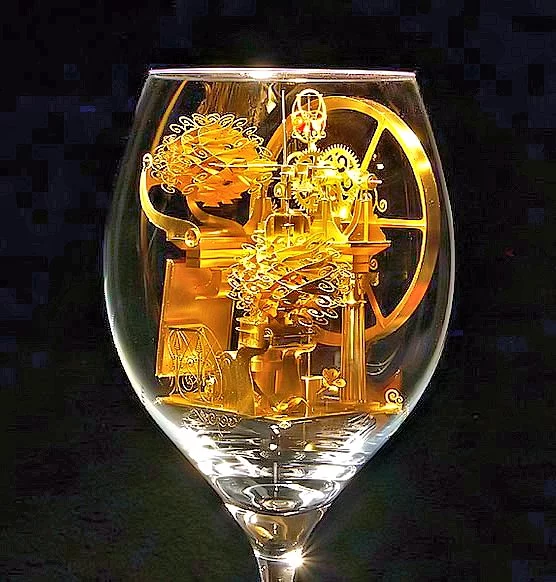A hobby is what you do with the rest of your time. It tends to feed a deep-seated need of which you may not even be aware - to be your best self. Some people golf, some swim, some quilt, some travel, some climb mountains ... there's no end to the list. Then there's Szymon Klimek, who makes some of the most incredible miniature electromechanical sculptures imaginable.
Szymon Klimek was born in Poland in 1954, and currently lives in Poznan. He earned an advanced degree in Engineering and made his way in the world. At the age of 50, he decided to make an 80 mm (3.15 inch) model of a locomotive and tender (roughly a Z scale model train - 1:220). The model was designed to fit inside a glass goblet for display. He has now completed more than 100 miniatures.

Klimek draws his plans up, being careful to include even the smallest details from the original. He then cuts the parts from thin (0.1 - 0.08 mm) sheet brass. He details and forms the various pieces by hand, then glues them in their proper places before finishing with a lacquer finish. Occasionally pieces are given some extra bling, such as floral motifs, ribbons or glittering zircons. Recently, Klimek has been creating fantasmagorical engines powered by a small solar cell, adding the element of motion, as shown in the videos at the end of this article. The microscopic detail Klimek produces in his work speaks to his sensibility for design and his patience, as well as for the steadiness of his hands.

Klimek used to cut parts and engrave his miniatures using a home-made reducing pantograph, but now uses CNC and lasers for cutting and engraving. Despite the entry of the 21st Century into his workshop, many of the pieces for his miniatures are still hand-cut. All bending, fitting, polishing, gluing, and varnishing processes are performed manually.

A typical miniature requires two or three months of work from starting the drawings to finishing the device. But the most difficult step, according to Klimek, is installation of the miniature into a glass goblet. From the start, the miniatures are designed to fit within a roughly spherical glass goblet having an inside diameter of 112 mm (4.4 in), a height of 142 mm (5.6 in), and a mouth opening of 86 mm (3.4 in). Surprisingly, one of the tricky bits is to properly clean the goblet.

Many miniatures are designed to barely fit inside the goblet - the diameter of the flywheel in the figure above is 84 mm (3.3 inches) is diameter. Once fit inside, the support struts are adjusted to their proper positions, and then are glued in place. Klimek then seals each goblet with a transparent lid to maintain a dust-free environment for his masterworks.

Two of Slimek's miniatures are in the Craftsmanship Museum in Carlsbad, California. But honors and recognition do not seem his motivating forces.
"I just decided to build a micro construction," says Slimek. "Sometimes they are unreal, but creating them gives me great joy. More than that - creating my devices gives me and people looking at my miniatures something to enjoy. I find it hard to imagine I can do something else."
Source: Szymon Klimek














































